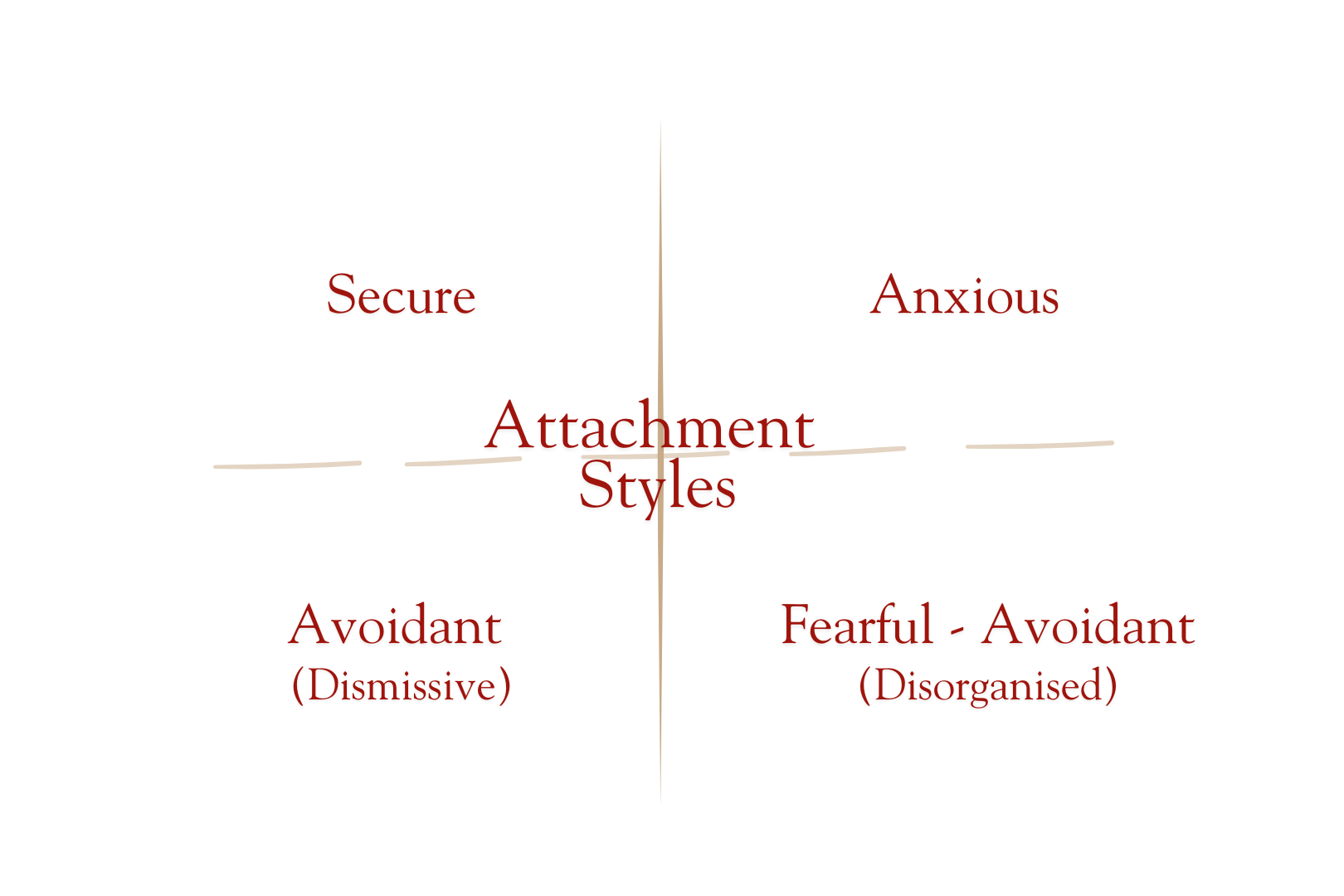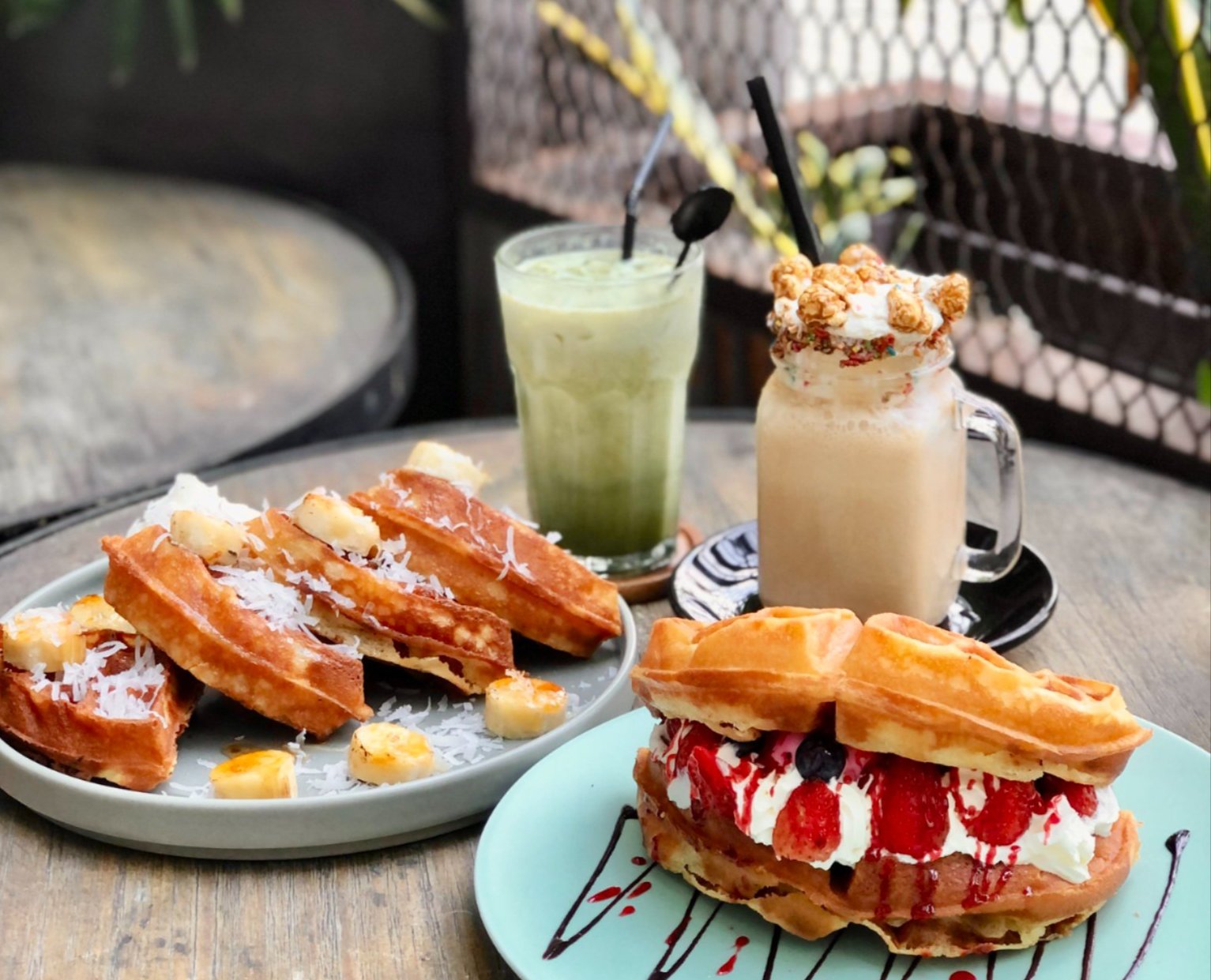
Ever felt like you’re chasing after love? Or maybe you find yourself pulling away when things get too close? The way we love and the conflicts that arise in our relationships are often shaped by our attachment styles. Not sure of your attachment style? Discover yours here.
 (Hazan & Shaver, 1987)
(Hazan & Shaver, 1987)
Originally developed by John Bowlby and Mary Ainsworth, attachment theory explains how our early experiences influence the way we connect with others. Later, Cindy Hazan and Phillip Shaver (1987) applied this to romantic relationships. Their research revealed four adult attachment styles that impact how we handle intimacy, trust, and conflict.
Secure Attachment: "I trust you, and I feel safe." 💑
Traits: People with secure attachment are comfortable with intimacy and independence. They communicate well and handle conflicts maturely.
Scenario: Your partner has been busy with work, and you notice they haven’t texted much today.
Unhealthy Response: “They must not care about me anymore.”
Healthy Response: “They’re probably caught up with work. I’ll check in later and see how they’re doing. Maybe I can book dinner tonight at Mighty Monster to give them a break.” 💡
 Mighty Monster, G-019 & G-E-019
Mighty Monster, G-019 & G-E-019
💡 Secure attachment creates stability and emotional safety in relationships. It allows for healthy conflict resolution without fear of abandonment or withdrawal.
Anxious Attachment: "Do you still love me?"
Traits: People with an anxious attachment style fear abandonment and seek constant reassurance.
Scenario: Your partner is out with friends and hasn’t responded to your text in hours.
Unhealthy Response: Blowing up their phone with messages like: “Are you ignoring me? What’s wrong?”
Healthy Response: “I feel a little anxious when I don’t hear from you, but I trust that you’ll reply when you can. I remember the last time this happened, you ran out of phone credit, maybe getting U Postpaid 38 from U Mobile could help prevent that in the future.”
 U Mobile, L3-048
U Mobile, L3-048
💡 If you’re anxious, practice self-soothing before reacting impulsively. If your partner is anxious, offer reassurance and consistent emotional availability.
Avoidant Attachment: "I need space."
Traits: Avoidant individuals value independence and may withdraw when things get too emotional.
Scenario: Your partner wants to talk about a recent disagreement, but you feel overwhelmed.
Unhealthy Response: Shutting down, avoiding eye contact, or walking away.
Healthy Response: “I want to talk about this, but I need a little time to process. Can we check in later? I’ll be at BookXcess to clear my mind.”
 Bookxcess, L1-012
Bookxcess, L1-012
💡 If you’re avoidant, practice leaning into vulnerability instead of retreating. But if you really need to step back, communicate that you require space and reassure your partner that you’ll reconnect. If your partner is avoidant, don’t chase, give them space, but set clear expectations.
Fearful-Avoidant (Disorganized) Attachment: "I want love, but I’m scared."
Traits: This style is a mix of anxious and avoidant tendencies where they crave intimacy but fear getting hurt.
Situation: Your partner expresses love and commitment, but you suddenly feel uneasy and withdraw.
Unhealthy Response: "This is too much. I need to step away before I get hurt." (Creates emotional distance out of fear.)
Healthy Response: "Hearing that makes me really happy, but deep down I notice myself feeling scared. I think it’s because I’ve been hurt before, but I don’t want to push you away. I know I tend to have indecisive thoughts, but when I need comfort, I always go back to my favorite food at Beef Roti by Sutera Mas."
 Beef Roti by Sutera Mas, B1-088
Beef Roti by Sutera Mas, B1-088
💡 If you’re fearful-avoidant, work on understanding your triggers and communicating openly. If your partner is fearful-avoidant, be patient and consistent while setting healthy boundaries. Challenge negative beliefs. Remind yourself that not everyone will abandon or hurt you.
Why Understanding Attachment Styles Matters
Relationships don’t fail just because of bad timing or personality clashes. They often struggle because of attachment wounds we haven’t healed. By recognising our own attachment patterns, we can:
💖 Communicate better and reduce conflict.
💖 Break unhealthy cycles and build secure relationships.
💖 Support our partner’s emotional needs while honouring our own.
The good news? Attachment styles are not set in stone! With self-awareness and effort, anyone can move towards a secure, fulfilling relationship.
Hazan, C., & Shaver, P. (1987). Romantic love conceptualized as an attachment process. Journal of Personality and Social Psychology, 52(3), 511–524. https://doi.org/10.1037/0022-3514.52.3.511
Share This:


